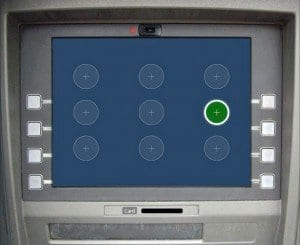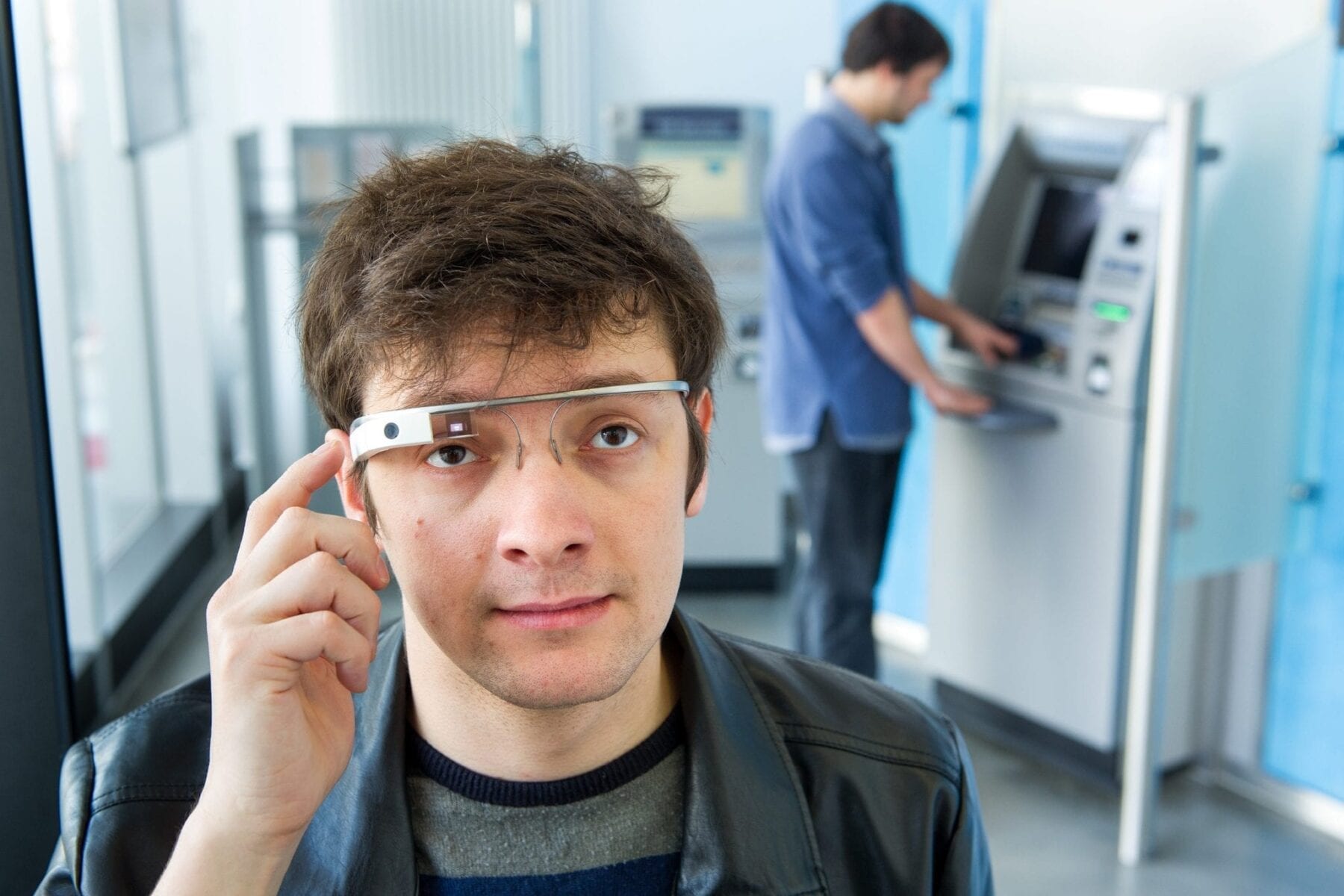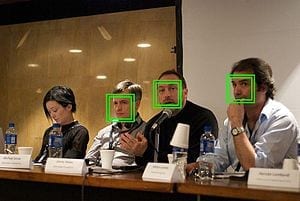
It’s a wonder we still put up with passwords.
We forget our highly secretive combinations, so we frequently have them reset and sent to our cellphones and alternative email addresses. We come up with clever jumbles of letters and words, only to mess up the order. We sit there on the login screen, desperately punching in a code we should know by heart.
Despite their inefficiencies, passwords are still the most common electronic authentication systems, protecting everything from our bank accounts, laptops and email to health information, utility bills and, of course, our Facebook profiles. While fingerprint- and eye- and face-recognition authentication technology is progressing, these biometric security systems haven’t yet gone mainstream.
University of Washington engineers are trying to figure out why. They found in a recent study that the user’s experience could be key to creating a system that doesn’t rely on passwords.
“How humans interact with biometric devices is critically important for their future success,” said lead researcher Cecilia Aragon, a UW associate professor of human centered design and engineering. “This is the beginning of looking at biometric authentication as a socio-technical system, where not only does it require that it be efficient and accurate, but also something that people trust, accept and don’t get frustrated with.”
Aragon believes one of the reasons face- and eye-recognition systems haven’t taken off is because the user’s experience often isn’t factored into the design. Her team presented its study, one of the first in the field to look at user preferences, at the International Association for Pattern Recognition’s International Conference on Biometrics in June. The researchers found that speed, accuracy and choice of error messages were all important for the success of an eye-tracking system.
“If you develop the technology and user interface in parallel, you can make sure the technology fits the users rather than the other way around,” Aragon said. “It’s very important to have feedback from all stakeholders in the process while you’re designing a biometric identification system.”
The UW team in collaboration with Oleg Komogortsev at Texas State University developed a new biometric authentication technique that identifies people based on their eye movements. They ran subjects through several types of authentication, then asked for feedback on the usability and perceived security.
The Latest Bing News on:
Eye tracking
- Eye Tracking Market CAGR of 24.5%, Behind the Scenes How Focus Group Strategies Shape Qualitative Discoverieson April 25, 2024 at 9:42 pm
Eye Tracking Market is valued approximately USD 295.6 million in 2019 and is anticipated to grow with a healthy growth rate of more than 24.5% over the forecast period 2020-2027. Eye Tracker is the ...
- Eye Tracking Market CAGR of 37.1%, The Art of Aim Identifying and Targeting Your Audience through Market Segmentationon April 21, 2024 at 10:13 pm
Request To Download Free Sample of This Strategic Report @- https://reportocean.com/industry-verticals/sample-request?report_id=30801 ...
- No-Camera Eye Tracking: Cornell Invents Tech To Track Gaze Minus Surveillanceon April 10, 2024 at 10:41 am
The product, of course, is a prototype at this point, but it’s something that could be incorporated into future eyewear such as Meta’s Smart Glasses, or VR headsets that use eye tracking for ...
- How Dynamic Planner used eye-tracking tech to meet consumer dutyon April 9, 2024 at 3:59 am
Surveys, interviews and focus groups are some of the methods the regulator has suggested when it comes to testing how much customers understand a firm’s communications.
- How to redo the Apple Vision Pro’s hand and eye trackingon April 5, 2024 at 6:00 am
Like Nilay Patel said in his review, it’s pretty magical — until it isn’t. And when hand or eye tracking feels off, the easiest thing to do is recalibrate it. There are lots of reasons why ...
- Could Apple Bring Eye Tracking And Pinch Gestures To The Mac?on April 3, 2024 at 7:00 am
Now, with the Vision Pro, Apple is primed to make eye-tracking, pinching, gestures and voice a standard user interface for its XR headsets. This latest UI used to navigate the Vision Pro is new.
- Semi-transparent camera allows for eye tracking without obstructing the viewon April 2, 2024 at 6:41 am
Using technology to track eye movement is beneficial in applications such as virtual reality helmets, automotive assistance devices and even advertising tracking. But the technology has remained ...
- eye trackingon March 28, 2024 at 5:00 pm
Researchers presented an interesting project at the 2024 IEEE Conference on Virtual Reality and 3D User Interfaces: it uses VR and eye tracking to simulate visual deficits such as macular ...
- Having eye or hand tracking issues on Vision Pro? Here's how you can recalibrateon March 6, 2024 at 9:07 am
Users are guided through the hand and eye tracking setup when they first start using Vision Pro, whether that be after purchasing one or during the in-store demo experience. However, you might ...
- Eye-Trackingon November 2, 2023 at 10:36 am
Guy, Josephine M Conklin, Kathy and Sanchez-Davies, Jennifer 2018. Literary stylistics, authorial intention and the scientific study of literature: A critical ...
The Latest Google Headlines on:
Eye tracking
[google_news title=”” keyword=”eye tracking” num_posts=”10″ blurb_length=”0″ show_thumb=”left”]
The Latest Bing News on:
Biometric security systems
- Airport biometrics bans proposed in US state and federal legislationon April 26, 2024 at 10:06 am
Clear is facing legislative pushback in California from lawmakers who claim the system discriminates. Meanwhile U.S. Senators target the TSA from a new angle.
- WhatsApp Gets ‘Class 3’ Security on Androidon April 25, 2024 at 12:58 pm
Android devices classify biometric security using a tiered system, with Class 3 representing the most robust level of protection. Class 3 authentication must meet strict benchmarks for accuracy, ...
- Dangerous FAA Amendment Would Hurt Aviation Securityon April 25, 2024 at 9:02 am
Merkley/Kennedy attempting to spike checkpoint wait times, waste taxpayer dollars and increase prevalence of fake identification.
- RBI’s call to replace two-factor authentication requires a multi-layered security approachon April 25, 2024 at 7:45 am
SMS 2FA is vulnerable to exploitation through social engineering. And with the evolution of AI technology, the threats are growing.
- TSA rolls out biometric technology to screen passengers through security checkpointon April 24, 2024 at 3:04 pm
Biometric technology allows the camera to scan faces to verify that the traveler is the same person in the photograph on a government-issued ID.
- Next-Generation Tactics for Boosting Security Across Your Trucking Fleeton April 22, 2024 at 9:28 am
In an era where technology is evolving at an unprecedented pace, the transportation industry is no exception. With the rise of sophisticated threats such as cargo theft, cyber-attacks, and safety ...
- New Google Play Biometrics Warning Issued To All Android Userson April 20, 2024 at 2:59 am
If you get an email from Google Play about the use of biometric purchase verification on your smartphone, make sure you take the warning about shared credentials seriously.
- CBP awards Sentrillion $11.7M for surveillance systemson April 19, 2024 at 2:13 pm
Sentrillion is a provider for other DHS agencies like the National Biodefense Analysis and Countermeasures Center and Transportation Security Administration.
- Decoding distinctions in biometricson April 19, 2024 at 4:01 am
and the lack of legal enforcement to mandate software companies safely dispose of collected biometric data –– all raise questions about the inherent security of deploying facial scanning systems ...
- Target Sued For Improper Biometric Surveillanceon April 17, 2024 at 9:00 pm
Arnetta Dean is the lead plaintiff in the class action suit filed several weeks ago in Illinois’ Cook County. It alleges that Target broke the Illinois Biometric Information Privacy Act, passed in ...
The Latest Google Headlines on:
Biometric security systems
[google_news title=”” keyword=”biometric security systems” num_posts=”10″ blurb_length=”0″ show_thumb=”left”]










